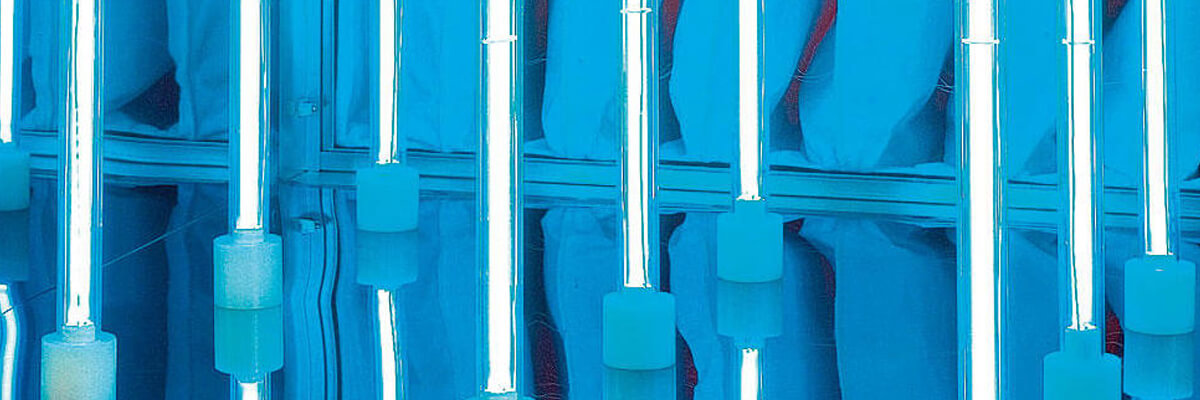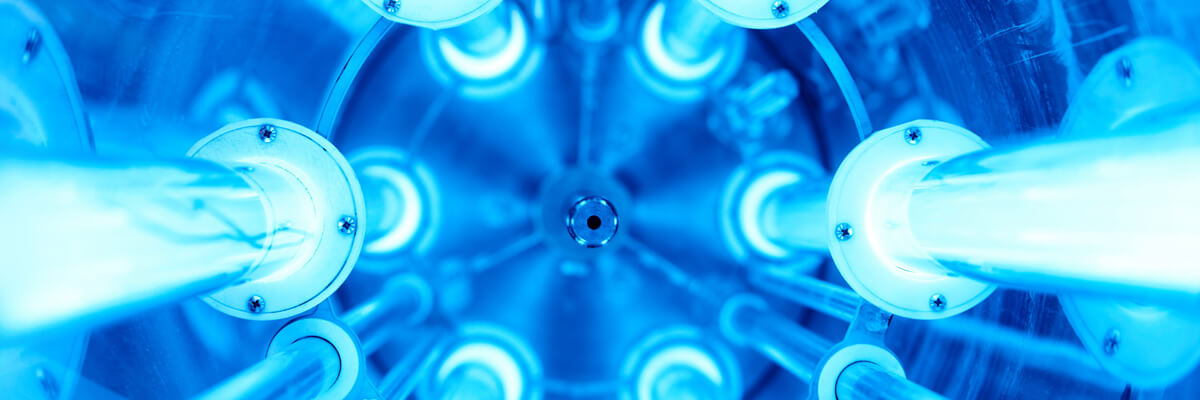Air Disinfection: Germicidal Recirculator
2021-01-11 by hqt
With the advent of the coronavirus, the issue of air disinfection has become relevant not only for medical institutions. Today there is a need to organize disinfection in every apartment and office. Given the fact that technology for the destruction of bacteria and viruses has never been a primary necessity, many simply do not know what devices can be used for disinfection, including in the presence of people.
In the wake of rush demand, many began to promote devices that have no bactericidal effect. For example, purifiers with a HEPA filter (dust filter). Moreover, the use of HEPA air purifiers can even be harmful. While ozonation and plasma air purification can provide even better effect than a bactericidal recirculator.
Air disinfection technologies
Ultraviolet radiation
The most famous technology is ultraviolet disinfection. Almost everyone has heard that the UV lamp destroys pathogens. This is how bactericidal recirculators work - the only devices from the group of disinfectants that are familiar to many.
Ultraviolet rays (UV, UV) are electromagnetic radiation of the optical (visible) spectrum with a wavelength range from 100 to 400 nm. Due to the fact that this spectrum is visible to the human eye, we clearly define the operation of the UV lamp as a visible white-violet glow.
Unlike, for example, X-ray radiation, which also belongs to the category of electromagnetic radiation. But according to the wavelength it is located outside the zone of perception of the human eye and therefore is invisible to us.
Depending on the wavelength, the UV spectrum is divided into three groups:
- Ultraviolet A, long-wavelength range - wavelength 315-400 nm;
- Ultraviolet B, medium wavelength range - wavelength 280-315 nm;
- Ultraviolet C, short-wave range - wavelength 100-280 nm.
At the same time, ultraviolet of different spectrum affects living microorganisms in different ways.

For example, short-wave UV-C radiation in the 205-315 nm range has the strongest bactericidal effect. It is on this that the bactericidal effect of ultraviolet lamps is based.
The fact is that the rays of this spectrum damage the DNA of the cell nucleus of the microorganism.
Scientifically speaking, UV has a destructive-modifying damage to the RNA and DNA of the cell.
These changes gradually accumulate, and over time, damaged cells are unable to divide. Which leads them to extinction in the first and subsequent generations.
Moreover, different types of microorganisms are susceptible to different ranges of the ultraviolet spectrum.
Bacteria are known to be the most sensitive to UV light. To destroy them, a soft short-wave UV-C radiation (200-300 nm) is sufficient. Then, in decreasing order of sensitivity, there are fungi, yeast, bacterial spores and viruses.
Viruses are the most resistant to UV light. To cause noticeable damage to virions of viruses, ultraviolet light of a harder range is needed - UV-B or even UV-A.
Research results indicate that the longer the wavelength, the more harmful the effect of ultraviolet light on the virus. Most of the research conducted boils down to the fact that UV with a wavelength of 295 to 340 nanometers has the greatest effect on viruses.
For example, this is confirmed by a study of the effectiveness of pulsed ultraviolet systems Alpha, conducted at the Research Institute of Virology named after DI. Ivanovsky Ministry of Health of the Russian Federation.
In this study, the effect on viruses of conventional germicidal lamps in the 254 range and a more intense xenon UV source with a broad spectrum of 190-400 nm was compared. The results showed that the long-wave radiation source is significantly more effective than the widely used germicidal lamps.
Another addiction that scientists have discovered is that the larger the virus, the more it is exposed to ultraviolet radiation.
At the same time, there are a number of viruses that are generally immune to UV. For example, the RNA-containing virus IPNV of the genus Aquabirnavirus and AHNV (family Nodaviridae). Primarily because of their very small size (diameter 60 nm and 30 nm, respectively).
While the most susceptible to the action of ultraviolet radiation are large herpes viruses, the diameter of the virion of which, together with the envelope, reaches 140-200 nm.
Since the size of the coronavirus approaches 100 nm, it is quite well susceptible to the destructive effects of ultraviolet radiation.
Air ozonation
This technology is much less familiar to the average person. Although the disinfecting effect of ozone is 3-5 times higher than that of ultraviolet radiation Ozone instantly destroys not only bacteria, but all known viruses and fungi. And he does it much more efficiently than chlorine and any other known disinfectants. Due to the fact that ozone has a destructive and oxidizing effect on the cell walls and cytoplasm, completely destroying their structure.
Therefore, there are very few forms of microorganisms resistant to ozone. The interaction of ozone with living microflora ends with the mechanical destruction of the cell, whatever it is: viruses, bacteria, spores, fungi, algae, etc.

It is important that after disinfection with ozone no compounds or odors arise. The only thing that remains after the action of ozone is oxygen. Indeed, after the end of the oxidation process, ozone turns back into oxygen. Due to the fact that ozone has such a valuable self-degradation property, its overdose is impossible.
Ozone is a gas produced by the action of an electric discharge and ultraviolet light on oxygen.
By the way, this is why the operation of mercury UV lamps (and this is the vast majority of them) also produces a small amount of ozone. This smell can be felt with prolonged use of the UV disinfectant.
Ozone is well known to each of us by the smell that appears after a thunderstorm.
The electrostatic discharge, which occurs during lightning, forms this gas, the presence of which we sense by the characteristic "smell of a thunderstorm".
When introduced into water or air, ozone does four things:
- Bactericidal;
- Deodorant;
- Disinfectant;
- Oxidative.
Due to its very high oxidizing and disinfecting capacity, it is actively used for water purification (water ozonation) and air.
Benefits of ozone disinfection
The use of ozone has important advantages over chlorine:
- Due to the use in small doses, it does not give side effects. It does not pollute the environment, but at the same time it is a powerful disinfectant.
- Allows you to organize sanitization and disinfection of any surfaces, materials, including water and air.
- One ozone molecule in its action is equivalent to 3000 to 10000 chlorine molecules, it kills pathogenic microorganisms 3500 times faster than a chlorine molecule.
For example, the poliomyelitis virus dies at a residual ozone of 0.45 lg / l after 2 minutes, and at a chlorine dose of 1 lg / l only after 3 hours. The effect of ozone on spores, bacteria and, in general, any pathogenic microorganisms is 300-600 times stronger. than chlorine. The efficiency of ozonation for water purification is also high. For example, when the color of water decreases (the development of algae and phytoplankton in it), ozone is needed 2.5 times less than chlorine.
Important advantages of ozonation over UV radiation:
- Completely destroys any microflora and pollutants;
- Provides an instant effect. Not a gradual weakening, as in UV, but the complete destruction of molecules;
- Disinfects not only air, but also surfaces;
- Affects all known types of viruses, fungal spores and bacteria without exception.
Difficulties in using ozone for disinfection and disinfection:
Ozone is a poisonous gas not only for microorganisms, but also for humans. Therefore, it is important to observe safe concentrations here. For example, in household electrostatic and plasma air purifiers, the emission of ozone is accurately calculated in order to prevent exceeding the MPC in a room of a certain area.
Large concentrations of ozone (which, for example, generate air ozonizers) are acceptable for disinfection of premises only without the presence of people.
So ozone is the most effective way to instantly decontaminate any environment.

